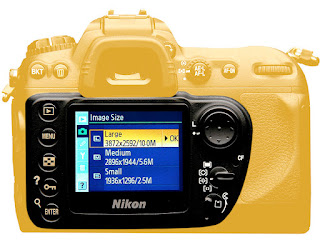The Basic Talk of Digital Photography
If we are talking about photography, we must never be separated from some of the following very Basic topics :
- Lenses
- Diafragma
- Speed
- Composition & Framing
- Flash & Cahaya Konstan
- Angle of View [ normal, bird eye-view, frog eye-view ]
Cameras &
Accessories Needed
- Compact camera
(A Point-and-Shoot camera, also called acompact camera, is a still camera designed
primarily for simple operation. Most use focus free lenses or autofocus for
focusing, automatic systems for setting the exposure options, and have flash
units built in.)
- Mirrorless Camera
(Often, entry-level mirrorless cameras are a replacement for consumers who
are using an entry-level DSLR and like the interchangeable-lens feature, but
want something that is lighter and smaller. These cameras usually offer an LCD to compose your
photos instead of an electronic viewfinder.)
- DSLR’s camera
(A digital single-lens
reflex camera (also
called a digital SLR or DSLR) is a digital cameracombining the optics and the mechanisms of a
single-lens reflex camera with
a digital imaging sensor, as opposed to photographic film.)
- Digital Back
(A digital camera back is a device that attaches to the back of a camera in place of a film holder and
contains an electronic image sensor. Nowadays Digital Back is rarely used by professional photographers.)
- External flash
- Tripods
- Lens Filters
- Storage Media
- etc
Basic digital cameras features
ISO rating 50, 100, 200, …,
3200, 6400,…
white balance Auto,
Custom, Kelvin, Tungsten, Fluorescent, Daylight, Flash, Cloudy, Shade
Color Mode sRGB, adobe RGB
Image quality setting file
format JPEG, NEF/RAW, TIFF)
The determination of the size and
quality of the images is very dependent on :
a. purpose and objectives:
- Documentation
- Journalism?
- commercial
- Fine-art?
- The size of the enlargement?
b. capacity memory card as well?
c. storage media that we have.
Daus Adrian



